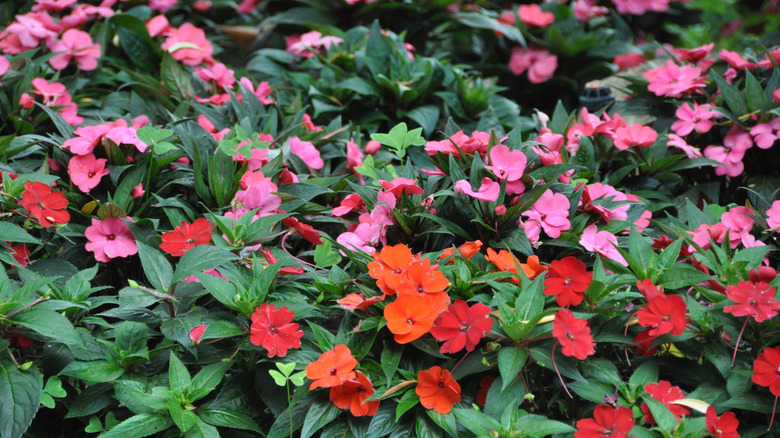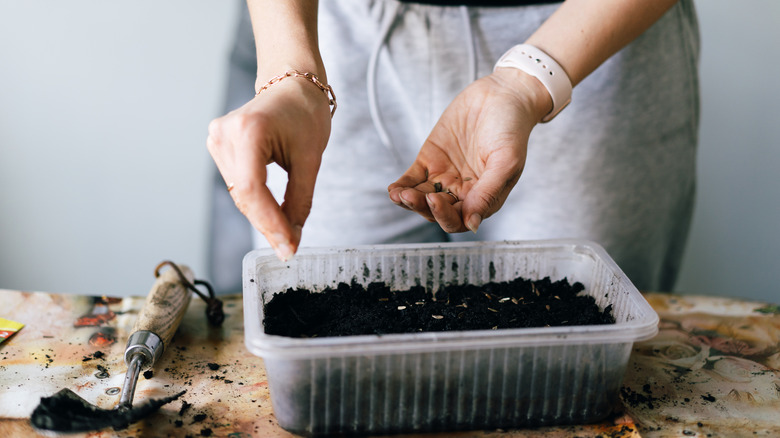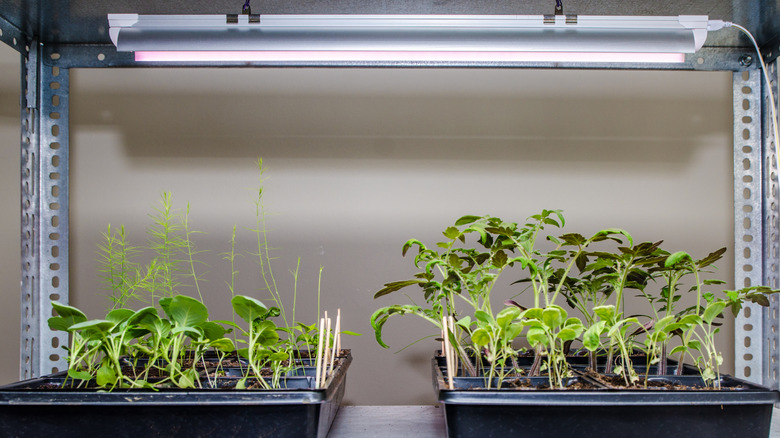Tips For Growing Impatiens From Seed To Keep A Colorful Garden On A Budget
Impatiens are wonderfully colorful plants to have in your landscape, especially if you have a few of those shady spots that you might want to brighten up with some happy flowers. You may already know that impatiens are a garden-hardy flower that's a better replacement for geraniums, because they're relatively easy to grow and don't require a lot of extra attention. However, if you're on a budget, purchasing ready-grown plants from your local nursery can get a little expensive if you want a large variety to fill in all those empty spots in your yard. You might even want to create some gorgeous pots and hanging planters filled with pretty blooms, and for these reasons, it's much more economical to grow these plants from seed.
But to do this successfully, you'll want to know a few tips for providing the right conditions to get them to germinate. Firstly, it's important to note that impatiens seeds are quite slow to sprout and grow. Therefore, it's a good idea to start them indoors around six to 10 weeks before your last frost date. Depending on where you live, this will usually be sometime in February. Remember that it will take about 11 to 13 weeks before your seed-grown plants start blooming, so getting the timing right is vital if you want to enjoy those magnificent blooms in your yard.
Tips for starting your impatiens seeds
There are two crucial things to remember when starting impatiens from seeds – they need light to germinate and the soil needs to be adequately warm and moist. You can start your seeds in any type of container you have handy, such as a seedling flat or even a clean takeout container. Fill this with either a commercial seed-starting mix or make your own by mixing 2 parts of coco coir with 1 part of fine vermiculite. The mix should be nice and fluffy. Water the mix with warm water to warm the soil and then sprinkle the seeds over the mix once it's cool to the touch. At this point, you don't want to cover the seeds, but just gently firm them down. Mist the seeds with water and cover them with a plant cloche to help maintain moisture and warmth.
Place your container in a warm, bright spot. For better germination, it's a good idea to use a heat mat under your seeds to maintain the soil temperature between 70 and 75 degrees Fahrenheit. Keeping the mix at the right temperature is one of the top tricks for increasing seed germination rates. It's also advisable to use a grow light above the seed tray to ensure the seeds get enough light. Continue to monitor the soil and mist, so it stays moist. It can take around two to three weeks for your impatiens seeds to germinate.
What to do after germination
Once the seeds have sprouted, you can remove the plant cloche and take them off the heat mat, but keep the grow light turned on. After around a week to 10 days from germination, transplant the seedlings into individual pots or plant cells. Unless you have a sunny south-facing window for your seedlings, it's best to keep them under the grow light at this stage, so that you end up with nice stocky plants rather than tall lanky ones. The light should be about 4 to 6 inches above the small plants and should be left on for around 12 to 16 hours a day. If you've never used one of these before, you might want to know how to choose the perfect grow light to help your plants thrive, which will ideally be one that emits light in the blue-green part of the spectrum with a photosynthetic photon flux density (PPFD) of 100–300 µMol/m2/S.
It's best to water the seedlings from the bottom at this stage to avoid damping off, which is a fungal disease that can kill your young tender plants. Once all danger of frost has passed and your seedlings are advanced enough to plant into your garden, it's important to harden them off for about seven to 10 days first. To do this, place them outside for short periods in a shaded spot for the first two to three days. Then, gradually expose them to more light each day until they've spent the entire day outdoors, at which point they're ready to plant into your yard.


